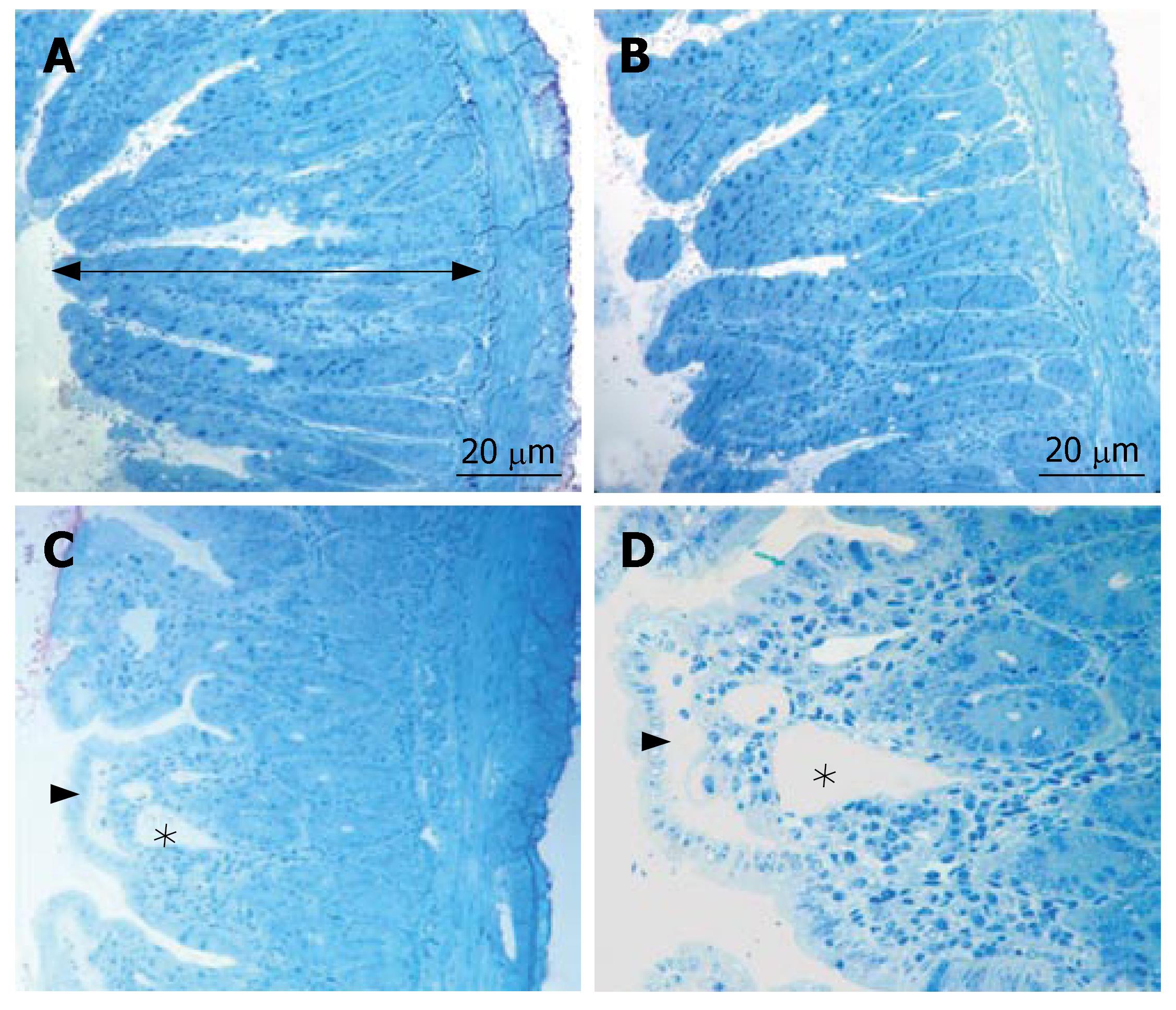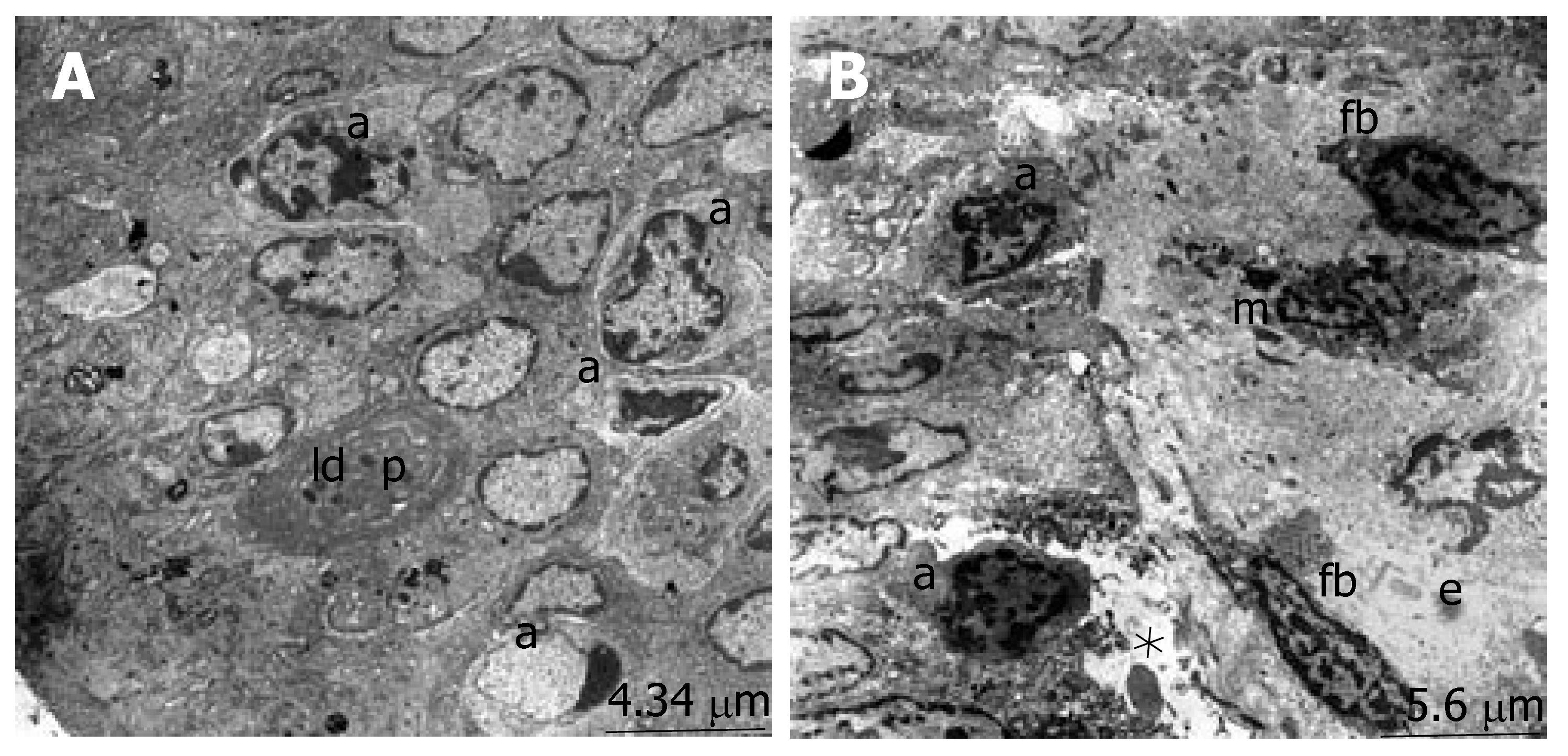Copyright
©2007 Baishideng Publishing Group Inc.
World J Gastroenterol. Oct 21, 2007; 13(39): 5226-5231
Published online Oct 21, 2007. doi: 10.3748/wjg.v13.i39.5226
Published online Oct 21, 2007. doi: 10.3748/wjg.v13.i39.5226
Figure 1 The micrographs of light microscope stained with toluidin blue.
A: Typical structure of villi and the total mucosal thickness (arrow) in the groupI; B: The normal villous architecture in group III; C, D: Blunting of the villi, the subepithelial edema (arrow head) and the dilated the lacteal (*) in group II.
Figure 2 These transmission electron microscope (TEM) micrographs illustrate the main ultrastructural features of enterocytes, and the absorptive cells of the ileum.
A: The regular structure of microvilli (mv), lumen (lu) and the nuclei of the enterocytes (*). B: The subepithelial edema (e), phagosomes (p), vacuoles (v), desquamation of epithelial tissue (arrow), nuclei of enterocytes (*) and candida (c). C: The regular structure of microvilli (mv), small vacuoles (v) and subepithelial edema (e).
Figure 3 A: The apoptotic cell nuclei (a) and phagosomes (p) with lipid droplets (ld).
B: The the apoptotic cell nuclei (a), fibrocytes (fb), macrophage (m) and subepithelial edema (e) with the seperation of the basal membrane (*).
- Citation: Sabuncuoglu MZ, Kismet K, Kilicoglu SS, Kilicoglu B, Erel S, Muratoglu S, Sunay AE, Erdemli E, Akkus MA. Propolis reduces bacterial translocation and intestinal villus atrophy in experimental obstructive jaundice. World J Gastroenterol 2007; 13(39): 5226-5231
- URL: https://www.wjgnet.com/1007-9327/full/v13/i39/5226.htm
- DOI: https://dx.doi.org/10.3748/wjg.v13.i39.5226











